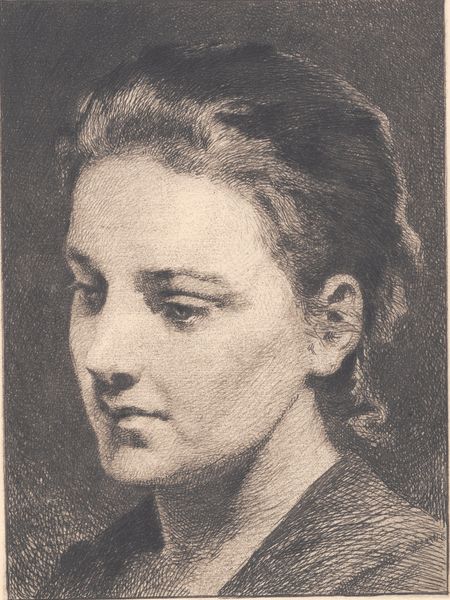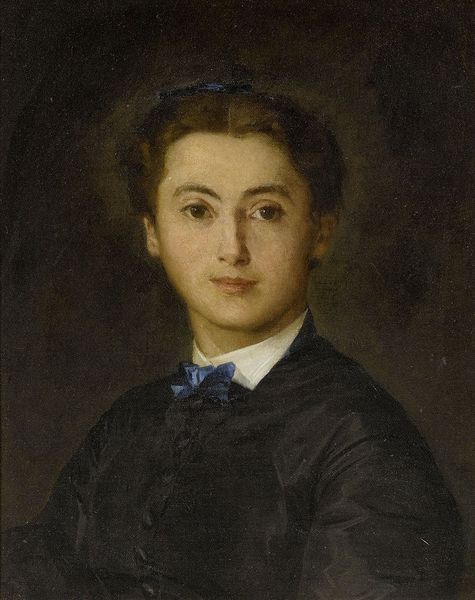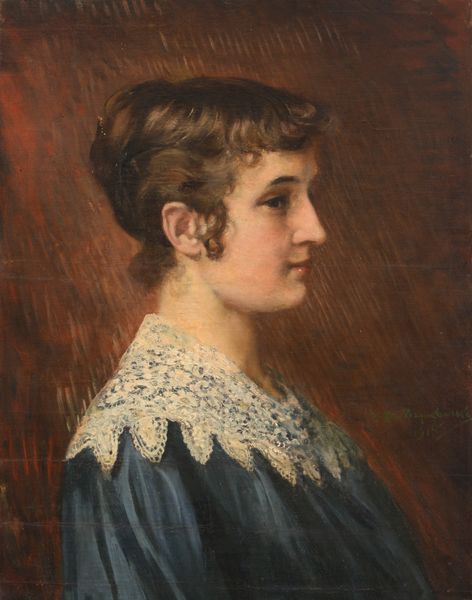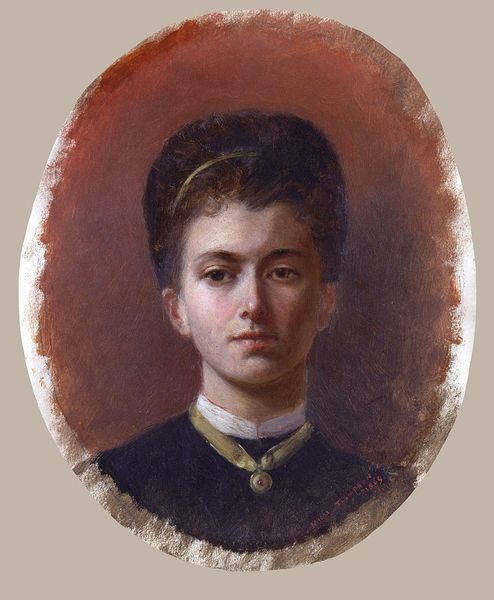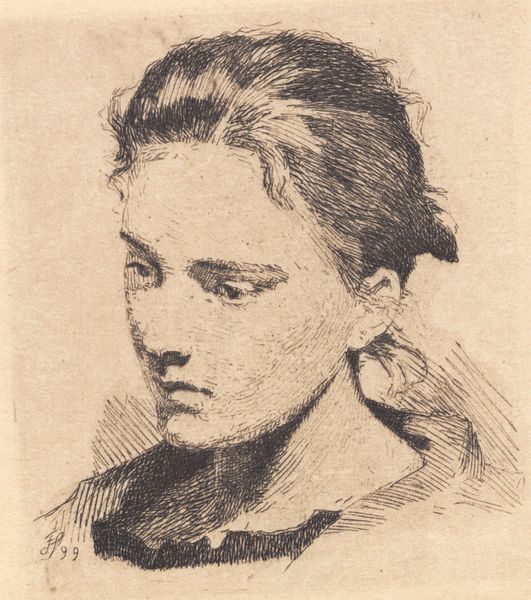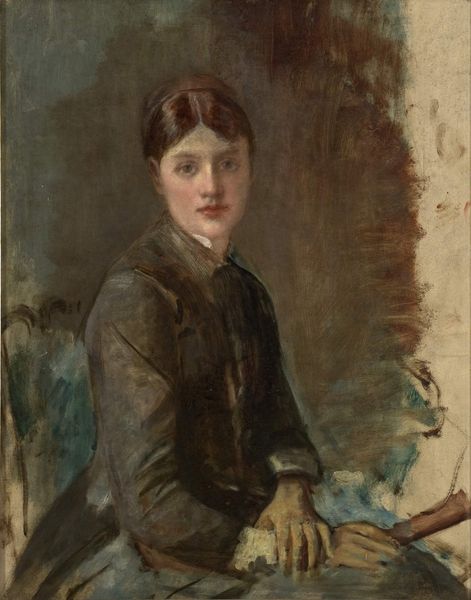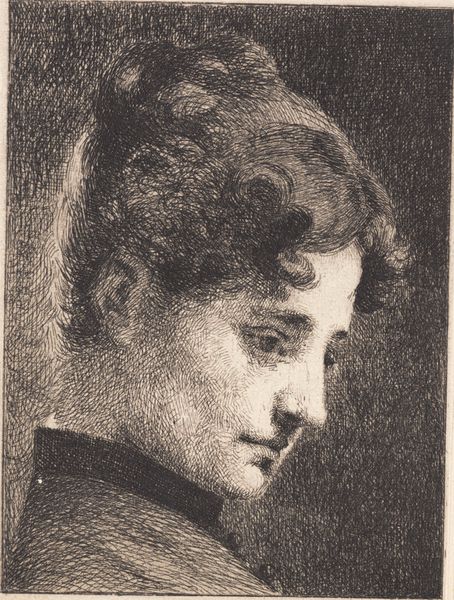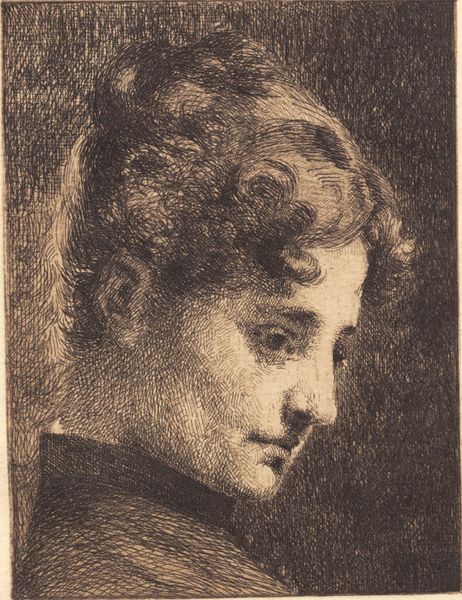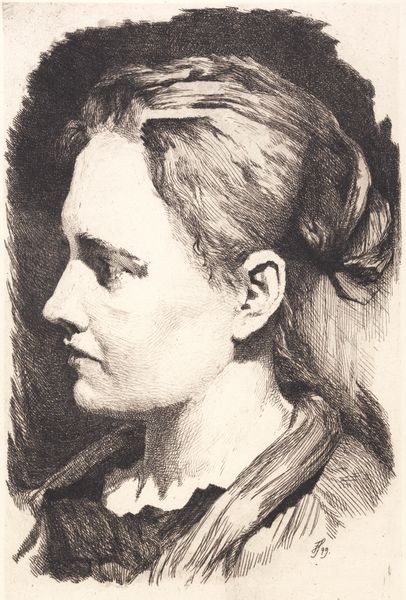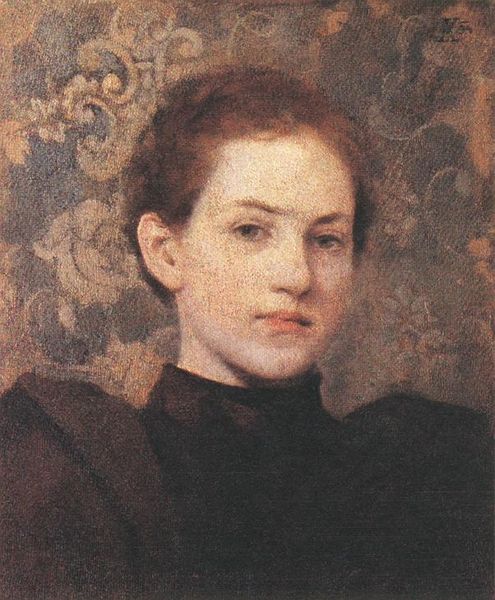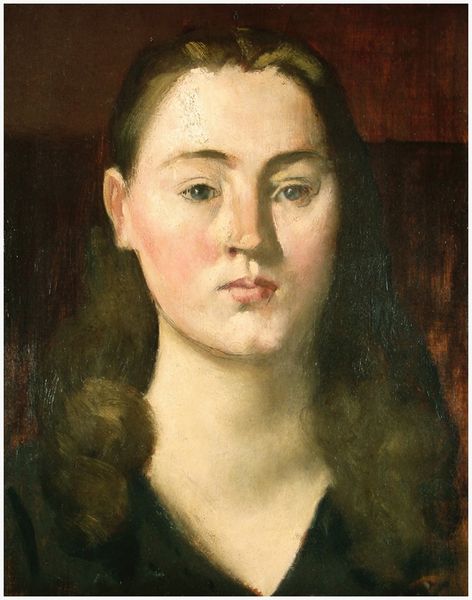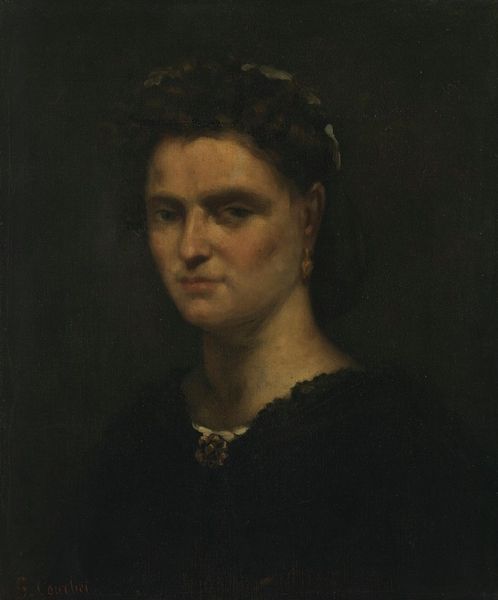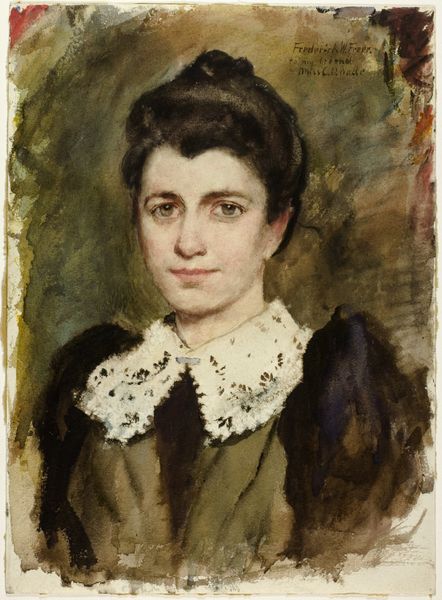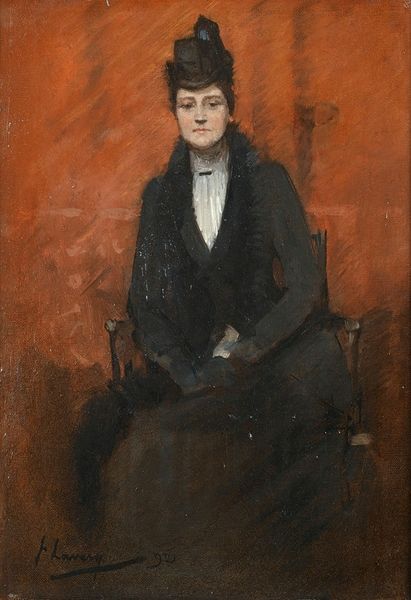
painting, oil-paint, impasto
#
portrait
#
figurative
#
painting
#
oil-paint
#
charcoal drawing
#
oil painting
#
impasto
#
genre-painting
#
portrait art
#
realism
Copyright: Public Domain: Artvee
Editor: This is an oil painting, “Portrait of a Woman,” by Thérèse Schwartze. The impasto is really striking – you can see the texture of the paint, almost like a sculptural relief. How do you read the way the materiality interacts with the portrait itself? Curator: Well, first we have to consider the function of portraiture itself during Schwartze's time. Portraiture wasn't simply about capturing a likeness, it was also deeply embedded in class and economics. Who had the resources to commission a portrait? And how does Schwartze's approach, with the visible impasto, challenge or reinforce those boundaries? Editor: That's fascinating. So the very physicality of the paint becomes a signifier? Does it elevate it beyond simple representation? Curator: Precisely. Look at the way the light catches the brushstrokes. It's not just about depicting a woman, it's about highlighting the labor, the process of *making* an image. How does that focus on production shift our perception of the subject? What does it say about the value we place on artistic skill versus, say, the subject's social standing? Editor: I never considered how the texture itself could carry so much weight – pun intended! It really makes me think about the relationship between the artist, the sitter, and the eventual owner of the work. Curator: Indeed. And the materials themselves—the oil paint, the canvas—are products of industrial processes. By calling attention to them, Schwartze indirectly addresses the broader social and economic context in which art is created and consumed. Editor: So, reading this through a materialist lens helps us unpack all the hidden meanings embedded within the surface, shifting the focus from *who* is depicted to *how* it was made, and why that matters. Curator: Exactly! Considering production, material, labor, and class allows us to see beyond just the representation of an image, and really analyze its broader significance.
Comments
No comments
Be the first to comment and join the conversation on the ultimate creative platform.
